Running a busy bar means keeping your beverages perfectly chilled while managing energy costs. A well-maintained storage system is essential for ensuring your drinks stay fresh and your HVAC system runs efficiently. Did you know that regular maintenance can reduce energy costs by 10-20%1? This guide will help you tackle common cooling challenges and provide expert tips to optimize your setup.
Choosing the right equipment with advanced features can make a big difference. For instance, Energy Star-certified models can save up to 30% on utility costs compared to non-certified ones2. Proper airflow and positioning away from heat sources also play a crucial role in maintaining efficiency1. Let’s dive into practical solutions to keep your bar running smoothly.
Key Takeaways
- Regular maintenance can cut energy costs by 10-20%.
- Energy Star-certified models save up to 30% on utilities.
- Proper airflow and positioning boost efficiency.
- Advanced features enhance cooling performance.
- Optimized storage keeps beverages fresh and accessible.
Identifying the Challenges in Commercial Beer Cooler HVAC Performance
Maintaining optimal performance in your beverage storage system is key to keeping drinks fresh and your energy bills low. However, several challenges can disrupt efficiency, leading to higher costs and inconsistent cooling. Let’s explore the most common issues and how environmental factors play a role.
What Are the Common HVAC Issues Affecting Coolers?
One of the most frequent problems is inconsistent temperature maintenance. If your refrigerator struggles to stay cold, it could be due to dirty condenser coils or a failing thermostat3. Regular checks can prevent these issues. Another common issue is airflow obstructions, often caused by blocked vents or improperly placed items in the storage space.
Motor breakdowns are another concern. Overheating, often caused by dirt buildup, can lead to costly repairs and increased energy consumption3. Ensuring proper maintenance, like cleaning coils twice a year, can enhance efficiency and prevent breakdowns4.
How Environmental Factors Influence Cooler Performance
Environmental factors can significantly impact your unit’s performance. High ambient temperature can strain the system, making it work harder to maintain the desired cooling level4. Poor placement, such as positioning the refrigerator near heat sources, can exacerbate this issue.
Spills and obstructions around the unit can also affect airflow, reducing efficiency. For example, a blocked back vent can lead to overheating and increased energy consumption3. Keeping the area around your unit clean and unobstructed is essential for optimal performance.
| Issue | Cause | Solution |
|---|---|---|
| Inconsistent Temperature | Dirty coils, failing thermostat | Regular maintenance, thermostat checks |
| Airflow Obstructions | Blocked vents, improper placement | Clear vents, optimize placement |
| Motor Breakdowns | Overheating, dirt buildup | Clean coils, monitor motor health |
| Environmental Strain | High ambient temperature, poor placement | Position away from heat sources, ensure ventilation |
By understanding these challenges, you can take proactive steps to ensure your system runs smoothly. In the next section, we’ll explore innovative solutions to maximize energy efficiency and keep your drinks perfectly chilled.
Exploring Key Features for Maximizing Energy Efficiency
Keeping your drinks at the perfect temperature doesn’t have to drain your energy budget. With the right features, you can enhance performance while saving on costs. Let’s dive into the innovations that make this possible.
Innovative Cooling Systems and Insulation Technologies
Modern cooling systems, like forced-air refrigeration, ensure even temperature distribution. This prevents hot spots and keeps every bottle perfectly chilled5. Think of it as a well-sealed thermos—advanced insulation traps cold air, reducing energy consumption by up to 30%6.
Energy-efficient models with ENERGY STAR ratings can cut electricity costs by half compared to older units5. These systems are designed to handle high-demand environments, ensuring durability and consistent performance6.
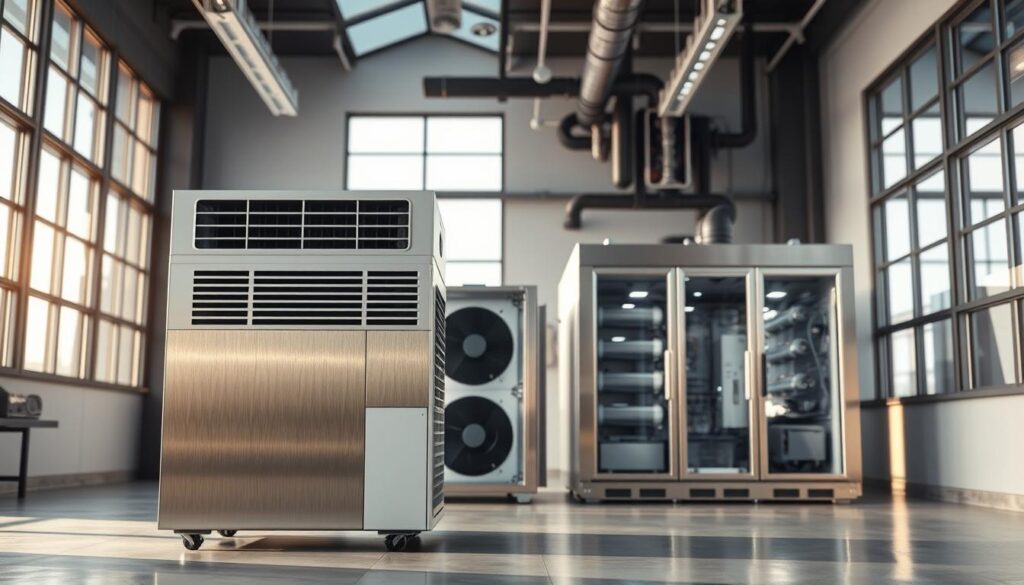
Design Elements That Enhance Energy Performance
Adjustable shelving and built-in LED lighting are game-changers. Shelving allows for easy access and optimal organization, while LED lights use 75% less energy than traditional options6. These features not only save power but also improve product display and visibility.
Glass doors are another smart choice. They minimize the need to open the unit, reducing energy loss and maintaining consistent cooling6. Plus, they let customers see your offerings, boosting impulse purchases7.
- Forced-air refrigeration ensures even cooling.
- Advanced insulation reduces energy use by up to 30%.
- Adjustable shelving and LED lighting enhance functionality.
- Glass doors minimize energy loss and improve visibility.
By integrating these features, you can maximize efficiency and create a seamless experience for both staff and customers. Upgrading your storage system is an investment that pays off in energy savings and operational performance.
Commercial Beer Cooler Guide: Essential Features and Performance Tips
Optimizing your storage setup can transform how you manage your bar’s efficiency. By incorporating the right features, you can enhance functionality, reduce energy costs, and ensure your drinks are always at the perfect temperature. Let’s explore the key elements that make a difference.
Incorporating Adjustable Shelving and LED Lighting
Adjustable shelving is a game-changer for organizing your storage. It allows you to customize the space to fit bottles, cans, or kegs of varying sizes, ensuring everything is within easy reach8. This flexibility not only improves accessibility but also maximizes the use of your unit’s interior.
LED lighting is another essential feature. It uses 75% less energy than traditional lighting while improving product visibility9. During busy hours, this makes it easier for staff to quickly locate items, reducing downtime and enhancing customer service.

Selecting Precise Temperature Controls and HVAC Integration
Precise temperature controls are crucial for maintaining the quality of your beverages. Advanced thermostatic controls ensure your unit stays within the optimal range of 36°F to 38°F, keeping drinks perfectly chilled10. This consistency is vital for preserving taste and freshness.
Integrating your cooling system with your HVAC setup can further enhance performance. Proper ventilation prevents overheating and ensures efficient operation8. This synergy between systems reduces energy consumption and extends the lifespan of your equipment.
| Feature | Benefit |
|---|---|
| Adjustable Shelving | Customizable organization for bottles, cans, and kegs |
| LED Lighting | Energy-efficient and improves product visibility |
| Precise Temperature Controls | Maintains optimal cooling for beverage quality |
| HVAC Integration | Enhances efficiency and reduces energy costs |
By focusing on these features, you can create a storage system that’s both efficient and user-friendly. In the next section, we’ll dive into simple maintenance practices to keep your setup running smoothly.
Simple Maintenance and Cleaning Best Practices
Efficient maintenance is the backbone of a well-functioning storage system. For busy operators, keeping your unit clean and well-maintained ensures smooth operations and cost savings. A regular cleaning routine not only prevents bacteria buildup but also extends the lifespan of your equipment.
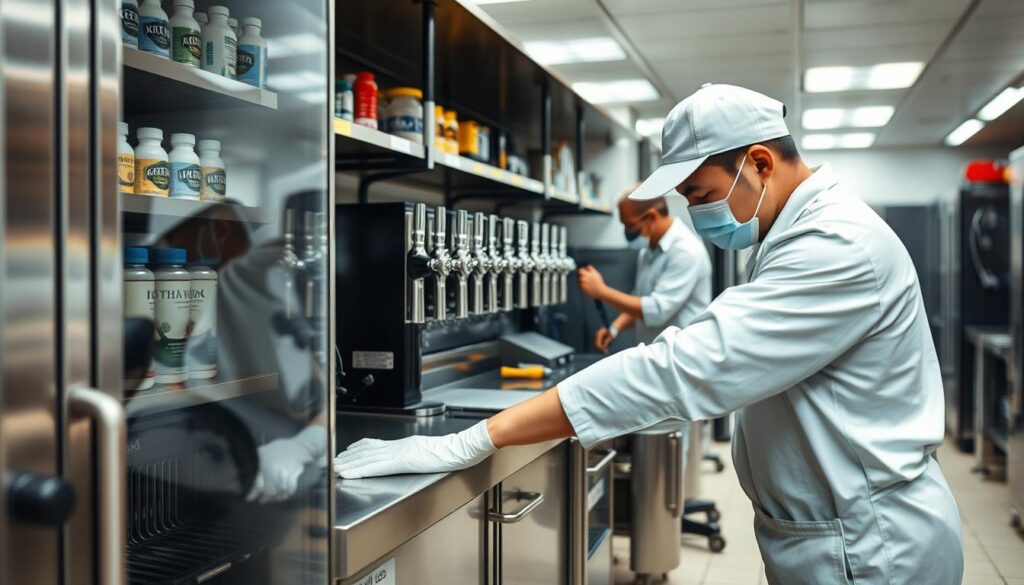
Establishing a Regular Cleaning and Upkeep Routine
Start with a daily wipe-down of interior surfaces to remove spills and debris. Use a mild bleach-based cleaner for hygiene and prevent contamination11. Weekly tasks should include cleaning the shelf and checking the door gaskets for proper sealing. This ensures energy efficiency and prevents cold air loss12.
Monthly maintenance involves deeper cleaning, such as vacuuming the condenser coils and inspecting the evaporator. Dirty coils can reduce efficiency by up to 30%, so keeping them clean is crucial13. Don’t forget to check the oil levels in the compressor to avoid long-term damage13.
- Daily: Wipe interior surfaces with a bleach-based cleaner.
- Weekly: Clean shelves and inspect door gaskets.
- Monthly: Vacuum condenser coils and check oil levels.
For the back bar, focus on maintaining the exterior with soap and water. This keeps your unit looking professional and prevents dirt buildup. Regular cleaning of the shelf and storage areas ensures easy access and organization11.
Finally, schedule professional inspections twice a year. Experts can identify potential issues early, saving you from costly repairs13. By following these steps, you’ll keep your storage system running efficiently and extend its lifespan.
Next, we’ll explore how smart cooling techniques can further enhance your day-to-day operations.
Implementing Smart Cooling Techniques for Better Operation
Smart cooling techniques can revolutionize how you manage your storage system’s efficiency. By adopting advanced methods, you can ensure your drinks stay perfectly chilled while reducing energy consumption. Let’s explore how these strategies can make a difference in your daily operations.
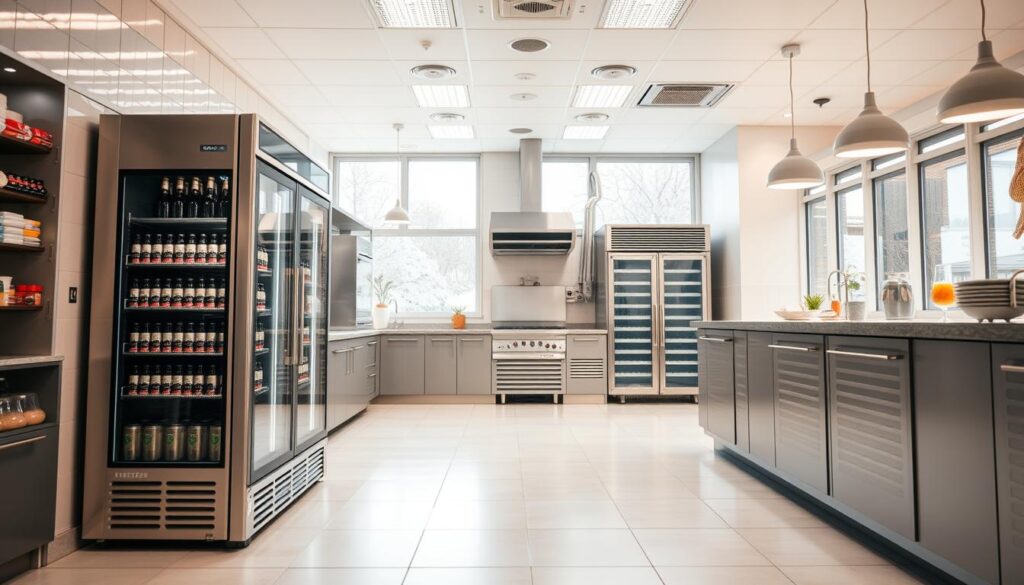
Effective Strategies for Forced-Air Refrigeration
Forced-air refrigeration is a game-changer for maintaining consistent temperatures. This system uses fans to circulate cold air evenly throughout the unit, preventing hot spots and ensuring every bottle stays cool14. It’s like having a personal assistant for your storage system, keeping everything in perfect condition.
Optimizing fan speed and airflow can further enhance efficiency. Adjusting these settings ensures the system works smarter, not harder, reducing energy use by up to 30%2. This approach not only saves on utility costs but also extends the lifespan of your equipment.
Energy Savings and Operational Stability
Smart cooling techniques can lead to significant energy savings. For example, ENERGY STAR-certified units save up to $40 annually for glass door models14. These savings add up over time, making it a worthwhile investment for busy setups.
Adjusting temperature settings based on usage patterns can also improve stability. For instance, lowering the cooling intensity during off-peak hours reduces strain on the system1. This ensures consistent performance while minimizing wear and tear.
- Forced-air refrigeration ensures even cooling and prevents hot spots.
- Optimizing fan speed and airflow reduces energy use by up to 30%2.
- ENERGY STAR-certified units save up to $40 annually for glass door models14.
- Adjusting settings based on usage patterns enhances operational stability1.
By implementing these strategies, you can create a more efficient and reliable storage system. In the next section, we’ll dive into design options that complement these smart cooling techniques.
Understanding Storage, Accessibility, and Design Options
Choosing the right design for your storage system can significantly impact both functionality and efficiency. Whether you’re optimizing for space, accessibility, or energy savings, the right features can make all the difference. Let’s explore how different design options can meet your specific needs.
Comparing Glass Door Versus Solid Door Features
Glass doors offer excellent product visibility, allowing customers to see what’s inside without opening the unit. This can boost sales by encouraging impulse purchases15. However, solid doors provide better insulation, reducing energy loss and maintaining consistent refrigeration levels16.
For high-traffic areas, glass doors are ideal for showcasing your offerings. In contrast, solid doors are better suited for back-of-house storage, where energy efficiency is a priority15. Consider your operation’s needs when deciding between the two.
Customizable Dividers and Easy Access Systems
Adjustable shelving and dividers allow you to tailor your storage space to fit various product sizes. This flexibility ensures efficient use of space and easy access to items15. For example, you can store bottles, cans, or kegs in the same unit by simply rearranging the dividers.
Easy access systems, like sliding shelves or pull-out trays, further enhance functionality. These features reduce the time staff spend searching for items, improving service speed and customer satisfaction16. Investing in customizable options can streamline your operation and boost productivity.
| Feature | Glass Door | Solid Door |
|---|---|---|
| Visibility | High | Low |
| Insulation | Moderate | High |
| Energy Efficiency | Lower | Higher |
| Best Use | Front-of-house display | Back-of-house storage |
By understanding these design options, you can choose the right setup for your equipment. Whether you prioritize visibility, insulation, or accessibility, there’s a solution that fits your need. These insights pave the way for exploring broader industry trends in the next section.
Industry Trends, Research, and Data-Driven Insights
Staying ahead in the beverage industry means embracing the latest trends and innovations. From energy-efficient technologies to advanced cooling systems, the landscape is evolving rapidly. Let’s explore how recent research and data are shaping the future of storage solutions.

Recent Statistics on Energy Consumption and Operational Efficiency
Recent studies show that energy-efficient models can reduce operational costs by up to 30%17. For example, units with LED lighting use 75% less energy while improving visibility and product appeal18. These advancements not only save money but also enhance the customer experience.
Market research highlights a growing demand for systems that optimize interior space and manage volume effectively19. Adjustable shelving and customizable dividers are becoming standard features, allowing businesses to store more drinks without compromising accessibility17.
How Current Research Is Shaping Cooler Technology
Innovations like AI-driven cooling systems are transforming the industry. These technologies analyze real-time data to optimize performance, ensuring consistent temperatures and reducing energy waste19. For instance, AI can predict peak usage times and adjust cooling intensity accordingly, improving efficiency18.
Case studies from leading manufacturers reveal significant improvements in LED lighting and interior design. These enhancements not only boost functionality but also align with consumer preferences for sleek, modern aesthetics17.
- Energy-efficient models reduce costs by up to 30%17.
- LED lighting improves visibility and saves energy18.
- AI-driven systems optimize cooling and reduce waste19.
- Customizable interior designs enhance storage volume17.
By leveraging these insights, you can make informed decisions that improve efficiency and meet customer expectations. The next section will summarize key takeaways and encourage further exploration of these advancements.
Conclusion
Ensuring your storage system operates at peak efficiency can transform your daily operations. From maintaining consistent lighting to optimizing led displays, every detail matters. Regular upkeep, like cleaning condenser coils, can improve energy efficiency by 20% and extend your equipment’s lifespan20.
Smart cooling techniques, such as AI-driven temperature control, ensure your environment stays at the perfect level while reducing energy waste21. These innovations not only save costs but also enhance the customer experience.
Take action today by implementing these tips. Whether it’s upgrading to energy-efficient models or scheduling professional inspections, small changes can lead to big results. For more advanced solutions, consult an expert to tailor your setup to your specific needs.
Your commitment to efficiency and innovation will pay off in the long run. Stay proactive, and your storage system will continue to perform at its best, keeping your operations smooth and your customers satisfied.
FAQ
What are the common HVAC issues affecting coolers?
How do environmental factors influence cooler performance?
What innovative cooling systems and insulation technologies are available?
What design elements enhance energy performance?
Why is adjustable shelving and LED lighting important?
How do precise temperature controls and HVAC integration help?
What’s the best way to establish a cleaning and upkeep routine?
What are effective strategies for forced-air refrigeration?
What are the benefits of glass doors versus solid doors?
How do customizable dividers and easy access systems improve functionality?
What do recent statistics say about energy consumption and efficiency?
How is current research shaping cooler technology?
Source Links
- Commercial Refrigeration Energy Efficiency & Maintenance
- How to Maximize Space with Commercial Beverage Coolers
- The Complete Guide to Commercial Refrigeration – KCR HVAC Blog
- Chiller Troubleshooting Guide: Common Problems & Solutions
- Choosing the right beer fridge for bars and restaurants
- The Ultimate Guide to Commercial Beverage Refrigerators: Features and Benefits
- Guide to Exploring Different Types of Commercial Refrigerators
- Bar Refrigerator: A Comprehensive Guide for Commercial Use
- Essential Guide to Beer Coolers: Types, Features, and Top Manufacturers in China
- Commercial Keg Cooler Essentials: Selecting the Right Unit for Your Bu
- Beer Checklist: Essential Maintenance Tips for Draft Beer System
- Draft Beer System Maintenance
- Keep Your Brewery Running Smoothly: Essential Chiller Maintenance Tips
- Comprehensive Guide to Back Bar Coolers
- Bar Refrigerator: A Comprehensive Guide for Commercial Use
- Refrigeration Coolers Market Size, Share, Industry Report, Revenue Trends and Growth Drivers 2032
- Global US Coolers Market Size to Reach $13.55 Bn by 2033
- Artificial intelligence offers beverage-makers powerful insights
- The Ultimate Guide to Choosing the Best Bar Cooler for Your Establishment – Apex Cool
- Commercial Beverage Cooler Technology Is Transforming Micro Market Retail | Due North
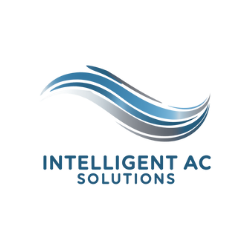
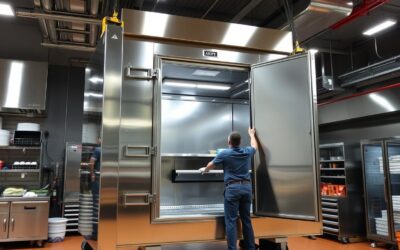
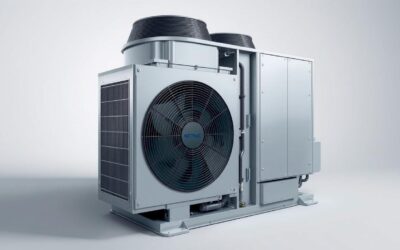
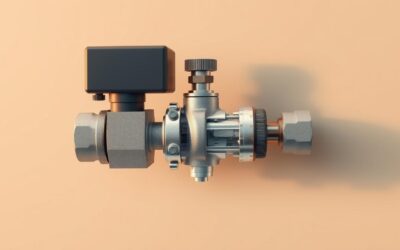
0 Comments